
- •Advanced chapters of theoretical electroengineering.
- •Lecture 6
- •Faraday’s Law
- •Induction by a temporal change of B
- •Induction through the motion of the conductor.
- •Induction through the motion of the conductor.
- •Induction through the motion of the conductor.
- •Induction through the motion of the conductor.
- •Induction by simultaneous temporal change of B and motion of the conductor.
- •Induction by simultaneous temporal change of B and motion of the conductor.
- •Unipolar generator.
- •Unipolar generator.
- •Unipolar generator.
- •Hering’s paradox. (Парадокс Геринга)
- •Hering’s paradox.
- •Diffusion of electromagnetic fields.
- •Diffusion of electromagnetic fields.
- •Periodic electromagnetic field in the conductors.
- •Periodic electromagnetic field in the conductors.
- •Penetration of the electromagnetic field into a conductor
- •The skin effect.
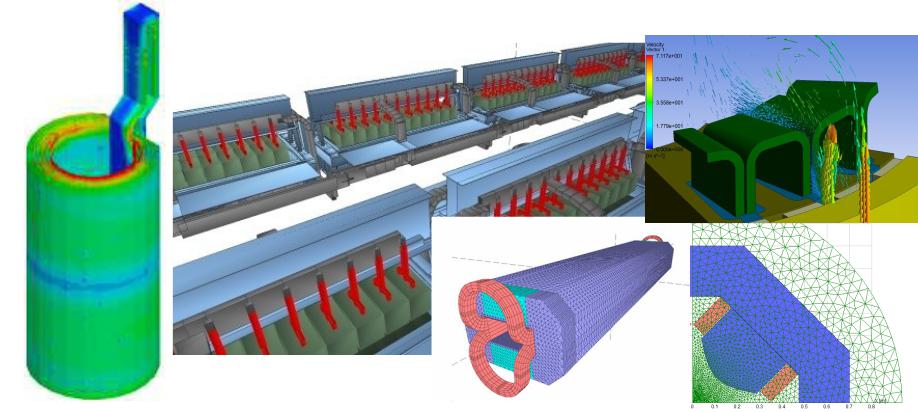
Advanced chapters of theoretical electroengineering.
SPbTU, IE, Prof. A.G. Kalimov 2022 |
1 |
Lecture 6
Time dependent fields
Gunther Lehner
Electromagnetic Field Theory for Engineers and Physicists
2
Faraday’s Law
Закон электромагнитной индукции
The Faraday’s Law is based on Maxwell equations.
The main idea of this law is:
changing in time magnetic field induces the electric field.
The origin of the induced voltage:
time varying magnetic fields;
moving of the coil in stationary magnetic field
Lenz's law (правило Ленца) climes that the electric field induced in a circuit due to a change in a magnetic field is directed to oppose the change of the flux.
3
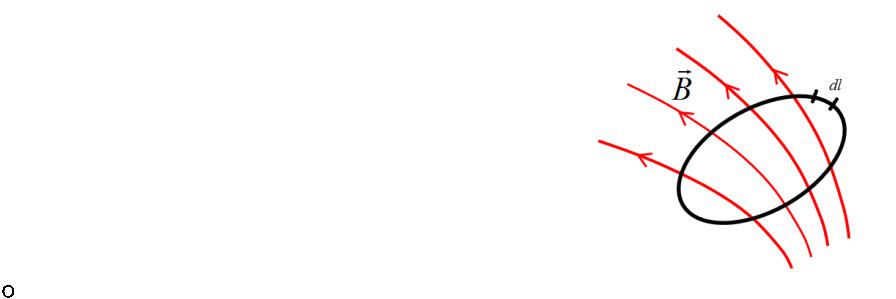
Induction by a temporal change of B
Consider a time dependent magnetic field described by the magnetic flux density or also called the magnetic induction and a contour l, fixed in space.
The Maxwell equation states that a time-varying magnetic field always accompanies a spatially varying (also possibly time-varying), non-conservative electric field:
B curlE t
The magnetic flux:
B ds
|
|
|
|
|
|
s |
|
|
|
|
|
|
|
B |
|
|
|
|
|
Edl |
curlE |
dS |
|
dS |
|
|
|||
|
|
S |
|
|
S t |
|
|
t |
|
|
U |
|
- electromotive force (EMF) or voltage |
|
|||||
|
t |
4 |
|||||||
|
|
|
|
|
|
|
|
||
|
|
|
|
|
|
|
|
|
|

Induction through the motion of the conductor.
Inside the magnetic field the force is: |
|
|
|
F Q v B |
|
The same effect is produced by the electric field: |
F Q E |
|
This effect may be explained by assuming |
|
|
E v B |
|
|
Moving a thin conducting contour in static magnetic field we shall get:
E dl |
v B dl B v dl |
|
a b c c a b c b a |
|
||||||||||||
|
|
|
|
|
|
|
|
|
|
|
|
|
|
|
|
|
|
|
|
|
|
|
|
|
|
||||||||
l |
l |
|
l |
|
|
|
|
|
|
|
|
|
|
|
|
|
Displacement vector covers the area during the time period of Δt
dS v dl dt
dl
 v dt
v dt
5
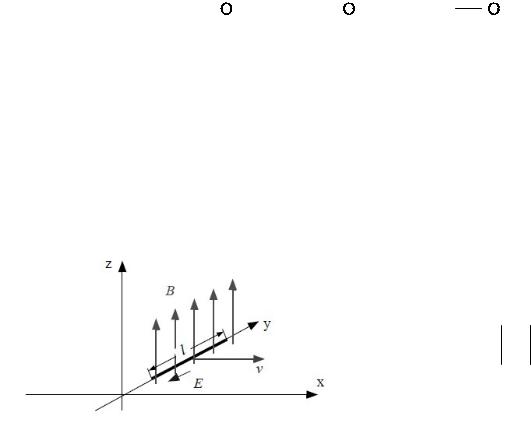
Induction through the motion of the conductor.
The EMF induced in the contour:
|
|
|
dS |
|
d |
|
|
|
d |
|
U E |
dl |
B |
dt |
dt |
B |
dS |
dt |
|||
l |
|
l |
|
|
l |
|
|
|||
The magnetic field distribution does not depend on time!
If the conductor is not closed
E v B
If the last 3 vectors are normal to each others than
U v B l
6
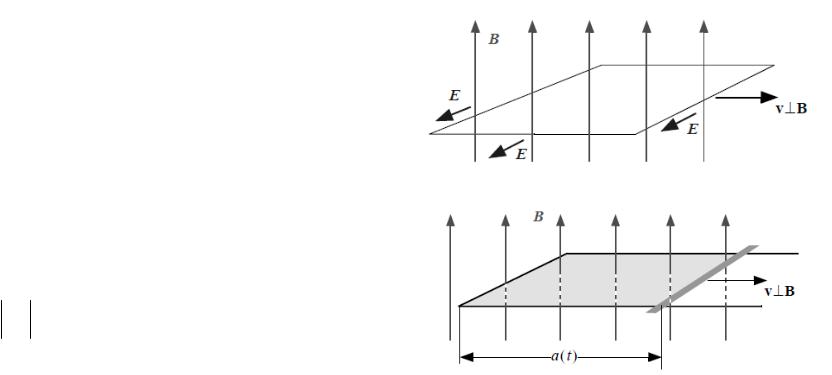
Induction through the motion of the conductor.
If the contour moves in the uniform magnetic field no EMF is induced because of mutual canceling of partial electromotive forces:
If only one side moves, than
Uv B l
Bla(t) Bl a0 vt
U d v B l dt
7
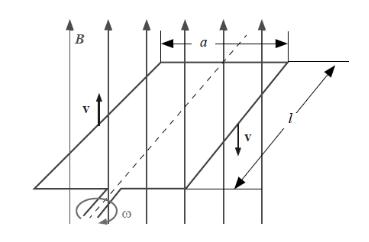
Induction through the motion of the conductor.
During this important process of energy transformation, mechanical energy is transformed into electrical energy.
Consider a frame rotating in the uniform magnetic field
If ω is the angular velocity, then the flux encompassed during the time period t is
B a l cos t
U d B a l sin t dt
This is the principle of alternating current generators.
8
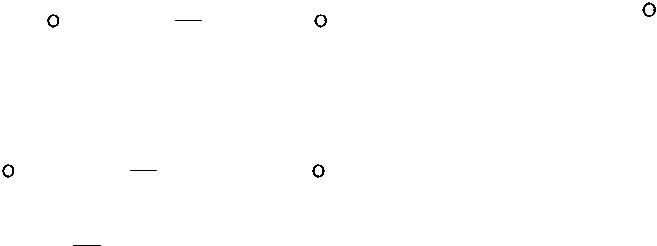
Induction by simultaneous temporal change of B and motion of the conductor.
The two effects discussed above can also occur simultaneously and in such case need to be added.
|
|
|
|
|
|
|
|
|
|
|
|
|
|
|
|
|
d |
|||
|
E dl |
|
t |
B dS |
B v dS |
|
|
|
E |
dl |
dt |
|||||||||
|
l |
|
|
|
|
S |
|
l |
|
|
|
|
|
|
|
|
l |
|
|
|
|
Using the vector magnetic potential: |
|
|
|
|
|
|
|||||||||||||
|
|
|
|
|
|
|
|
|
|
|
|
|
|
|
|
|
|
|
|
|
|
|
|
|
|
|
|
|
|
|
|
|
|
|
|
|
|
|
|
||
E dl |
t |
|
A dS |
v B dl |
|
|
|
|
|
|
||||||||||
l |
|
|
|
S |
|
|
l |
|
|
|
|
|
|
|
|
|
|
|||
|
|
|
|
|
|
|
|
|
|
|
|
|
|
|||||||
|
|
|
|
|
|
|
|
|
|
|
|
|
|
|
|
|
|
|
||
t |
|
A dS |
v B dS (the Gauss theorem for curl of vector) |
|||||||||||||||||
|
|
S |
|
|
|
|
S |
|
|
|
|
|
|
|
|
|
|
|
|
|
|
|
|
|
|
|
|
|
|
|
|
|
|
|
A |
|
|
|
|
|
|
|
|
|
|
|
|
|
|
|
|
|
|
E |
|
B |
|
dS 0 |
|
|
||
|
|
|
|
|
|
|
or: |
|
|
|
|
v |
|
|
|
|||||
|
|
|
|
|
|
|
|
|
|
|
|
t |
|
|
|
|
9 |
|||
|
|
|
|
|
|
|
|
|
S |
|
|
|
|
|
|
|
|
|
||
Induction by simultaneous temporal change of B and motion of the conductor.
The last expression is true for any surface so: |
|
|
A |
|
|
|
||
|
|
E |
|
v |
B |
|
0 |
|
|
|
t |
|
|||||
|
|
|
|
|
|
|
||
|
|
|
|
|
|
|
|
|
Introducing a suitable scalar |
|
A |
|
|
|
|
|
A |
|
|
function φ, we may write |
E |
t |
v |
B |
|
E |
|
t |
v |
B |
The field intensity E here |
is the one which an |
|
|
|
|
|
||||
observer would “see” when moving with the conductor.
An observer at rest then sees the field
|
|
A |
E |
|
|
|
|
t |
10
